Phylogenetics analysis with Extended Bayesian Skyline Plots (EBSP) using BEAST
Diego Gomes Teixeira (Ph.D.) and João Paulo M S Lima (Ph.D., Associate Professor)
Bioinformatics Multidisciplinary Environment - BioME, Universidade Federal do Rio Grande do Norte.
Introduction
BEAST is a framework that uses an evolutionary approach based on a Bayesian model, which involves a wide range of analyses, resulting in the inference of one or more phylogenies or family trees. It also includes traditional phylogenies, phylodynamics, and phylogeographic inferences, as well as coalescence analysis of the evolutionary history of a population, usually obtained from a single analysis (Drummond et al., 2005; Bouckaert et al., 2014).
The demographic history of a population leaves a signature on the genome of current representatives. The reconstruction of this history allows us to gain insights into various evolutionary processes involving population genetics, such as tracing the transmission and spread of a virus. The method for estimating population history from DNA or AA sequences depends only on the coalescing events' time and not exactly on the genealogical relationships between the sequences. For example, coalescence events occurring in rapid succession are indicative of a small gene population size (Ho; Shapiro, 2011).
This tutorial will guide you through a phylogenetic analysis of an alignment of ZIKA virus sequences, sampled during the outbreak period in South America. This tutorial is an adaptation of the study conducted by FARIA et al. (2016) which investigated the approximate date of introduction of the virus in the Americas by identifying a possible common ancestor among American and Asian isolates. The aim is to reproduce the results obtained in this study, with a small additional population analysis through an Extended Bayesian Skyline Plot (EBSP).
BEAUTi
Loading the NEXUS file
To load the alignment, select the "Import Alignment" option from the "File" menu. The file Zika.nexus_Tutorial can be downloaded HERE and contains an alignment of 23 Zika Virus sequences.
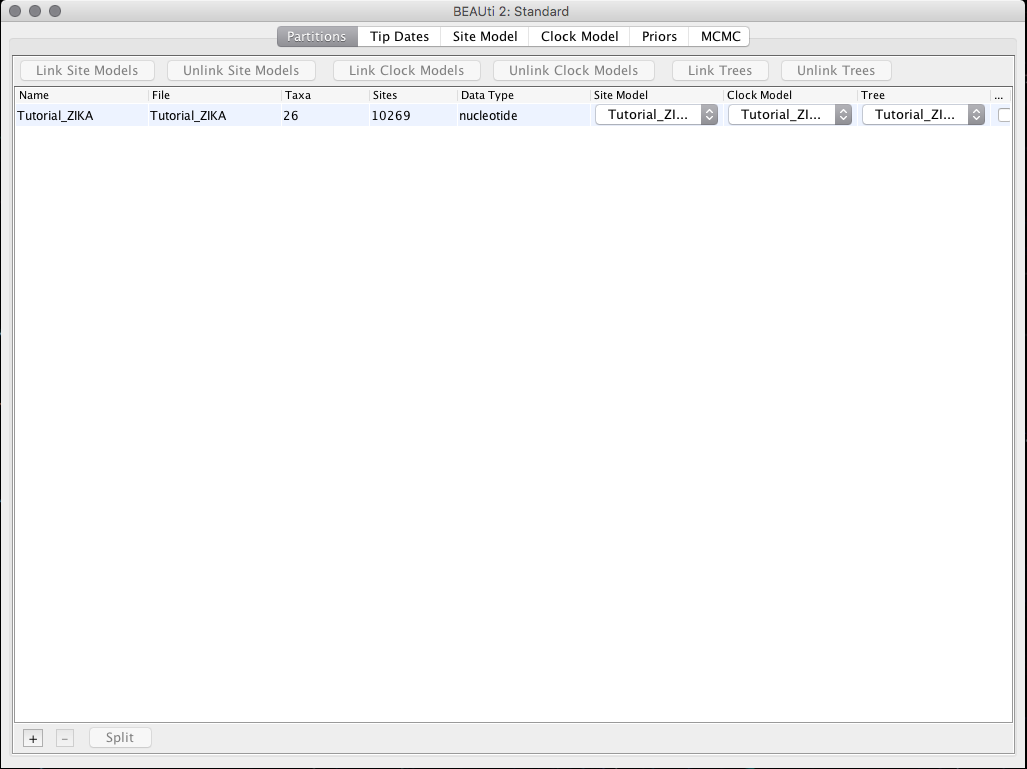
Adding the sampling date of the sequences
In the top menu, select the Tip Dates tab and then check the Use tip date box. You will have the option to manually add each of the dates in the Date field, or you can upload a pre-assembled file containing the list of sequence names and the date, separated by a tab. In this example, we will use this list, clicking on the Guess button and then selecting the read from file field. Then, load the file Tutorial_ZIKA_tips.dat.
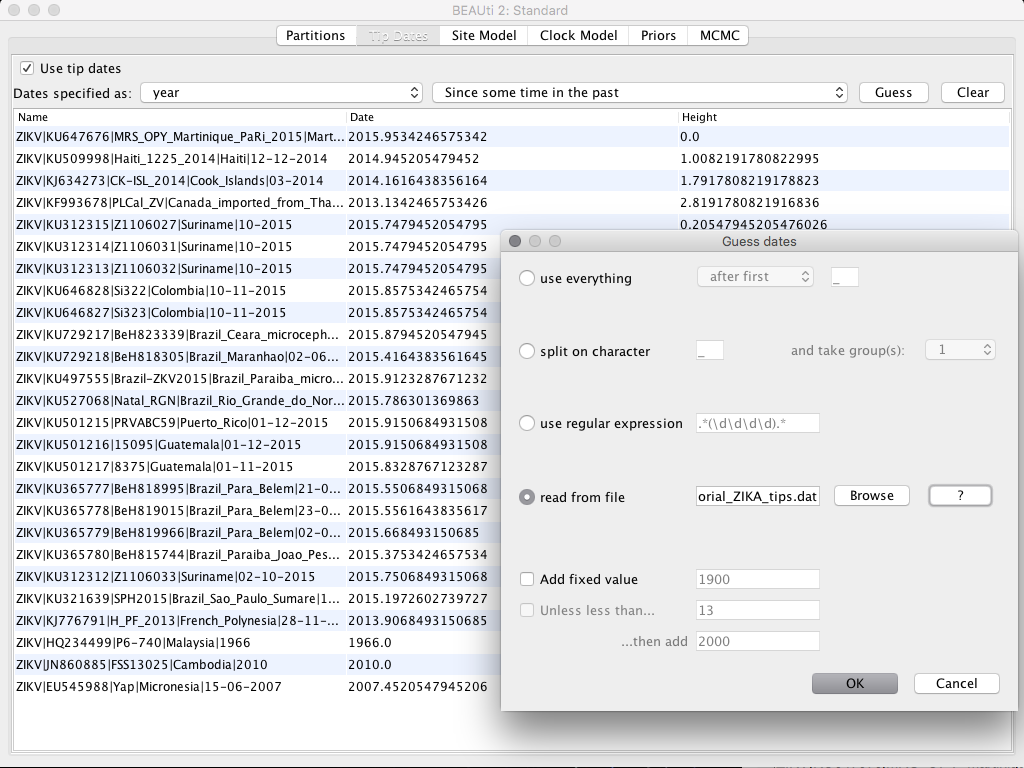
Selecting the model
In the top menu, select the tab Site Model and the field Subset Model change to the option GTR.
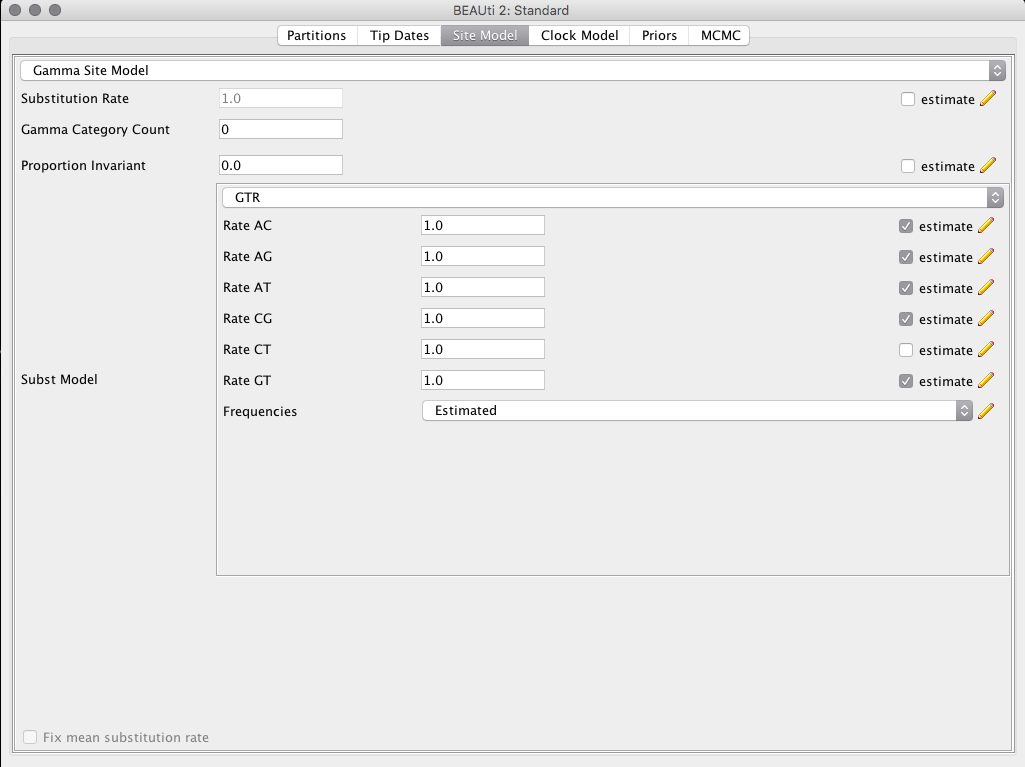
Configuring the Priors
In the Priors tab at Tree.t:Tutorial_ZIKA select the Coalescent Extended Bayesian Skyline option. Then click the + and select the option MRCA Prior. In the box that will appear, set the name of the taxon you want to work in the box Taxon set label. In this example, we will give the name of taxon A for the taxon that contains the sequences from South America plus the sequence from French Polynesia, and taxon B for the sequences from South America only.
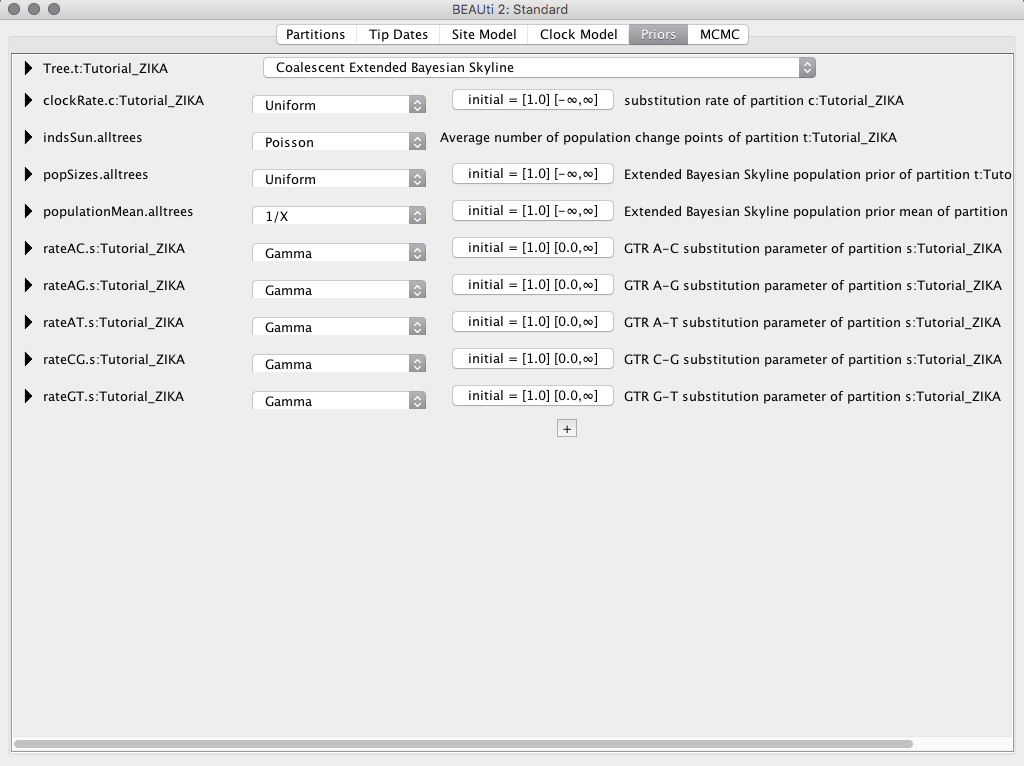
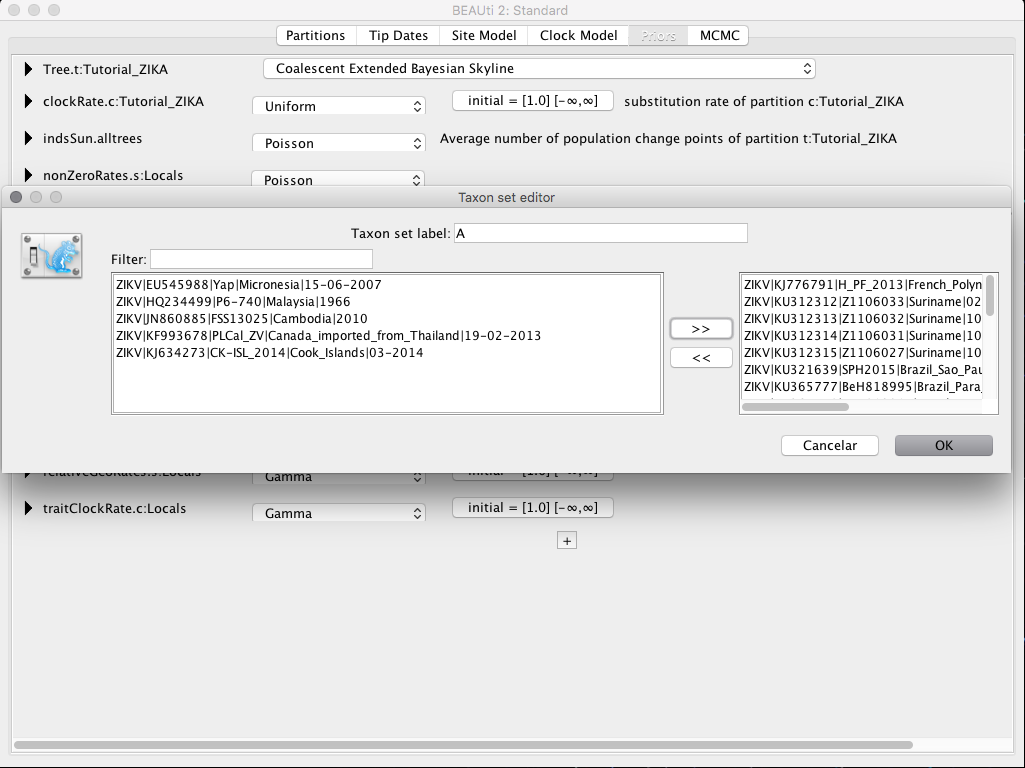
Configuring discrete features
Back to the Partitions tab, let us click the + button located at the bottom of the BEAUTi window and select the option Add Discrete Trait. In the resulting box, we will set the name Locals in the box Trait Name.
The next window will ask for the Trait name for each sequence. In that option, we will put the country of origin of each of the samples. Again we have the option to manually put the country name of one in one or to load a tabulated file containing the sequence name and the country name. In the Guess tab we will select the option Read from file and load the file Tutorial_ZIKA_locals.dat
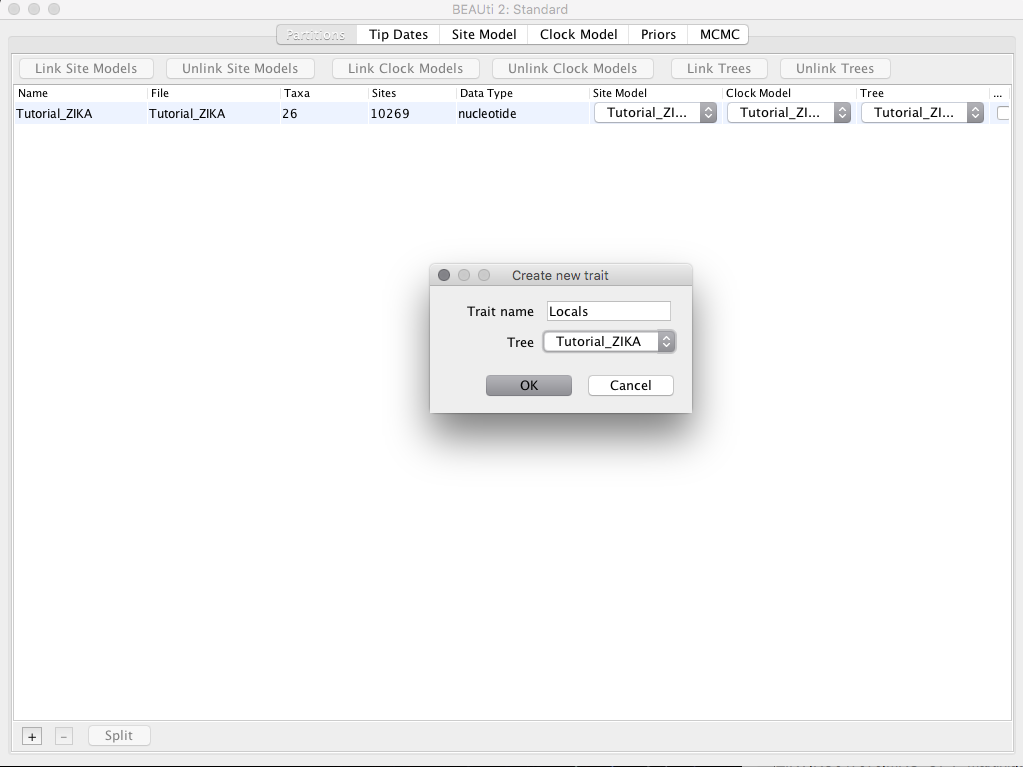
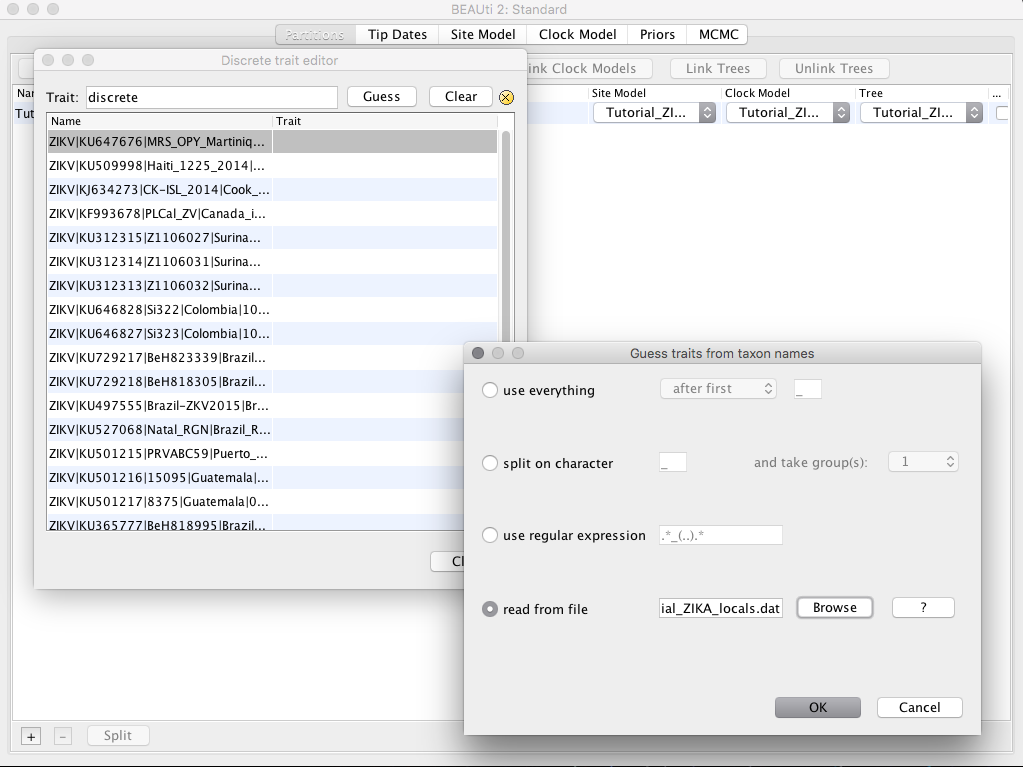
Configuring the MCMC
In the MCMC tab we will set the Chain Length to 50,000,000 and change the values of Log Every in the boxes tracelog, treelog.t:Tutorial_ZIKA, treeWithTraitLogger.Locals and EBSPLogger to 5,000.
Depending on your computer, this chain size can be considerable, and the program will take a long time running. However, it is necessary for EBSP. If you cannot run it, use the files already run at the end of this tutorial.
After this step, go to File > Save and save the .xml file.
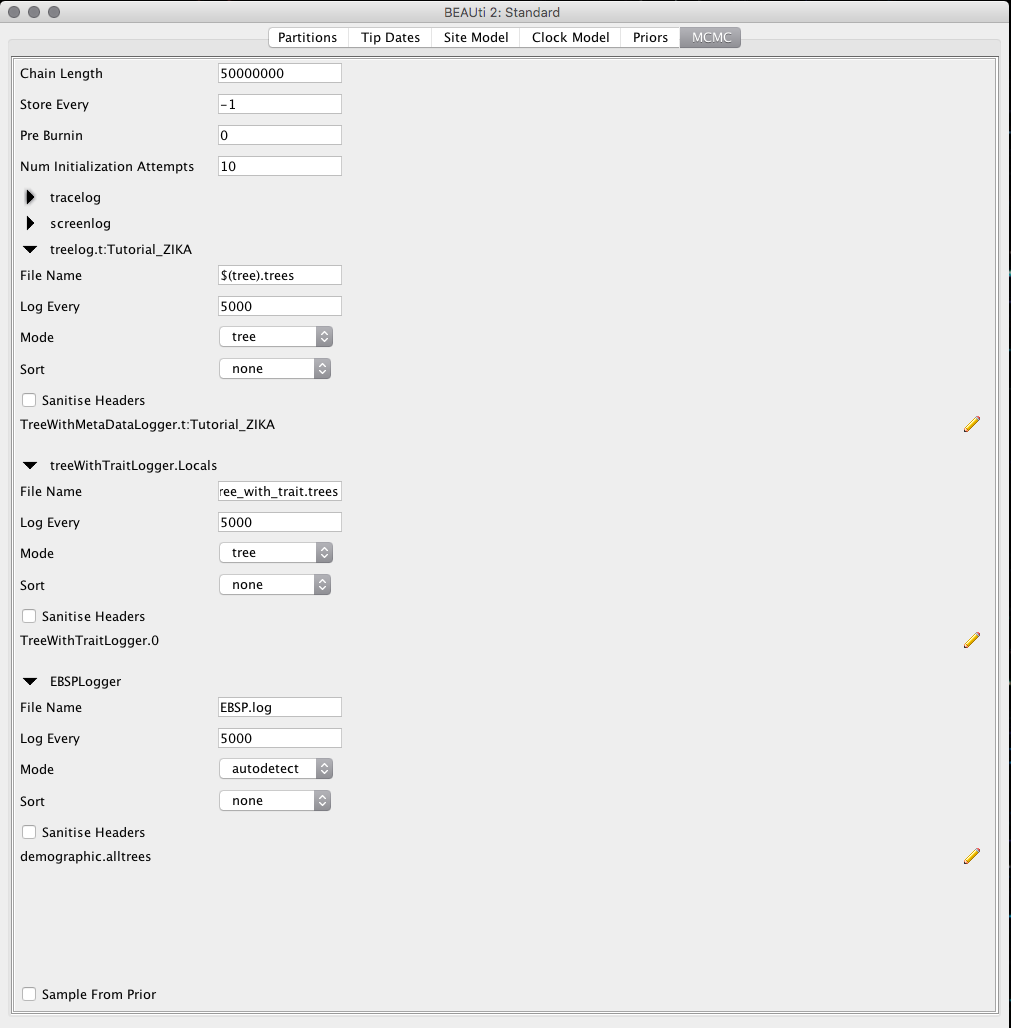
BEAST
Before running BEAST2, we have to install some additional extensions to perform these analyses. We will discuss these steps in a synchronous meeting.
In the BEAST window, in the BEAST XML FILE field, we will load the .xml file created by BEAUTi and click Run.
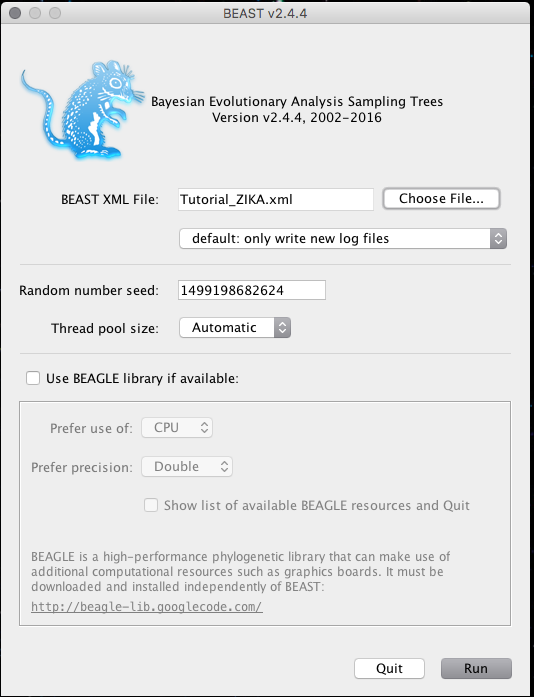
Tree Annotator
At this stage, we will discard the first trees generated by BEAST from the MCMC. In the Burnin percentage box, we will put for the program to remove 10% of the initial trees. In the Node heights option, we will select the Median heights option, and then we will load the BEAST output, the Locals_tree_with_trait.trees, in the Input Tree File field, and define the name of the output file in the Output File option.

FigTree
In FigTree, load the file Local_tree_with_trait.tree, then adjust the branches.
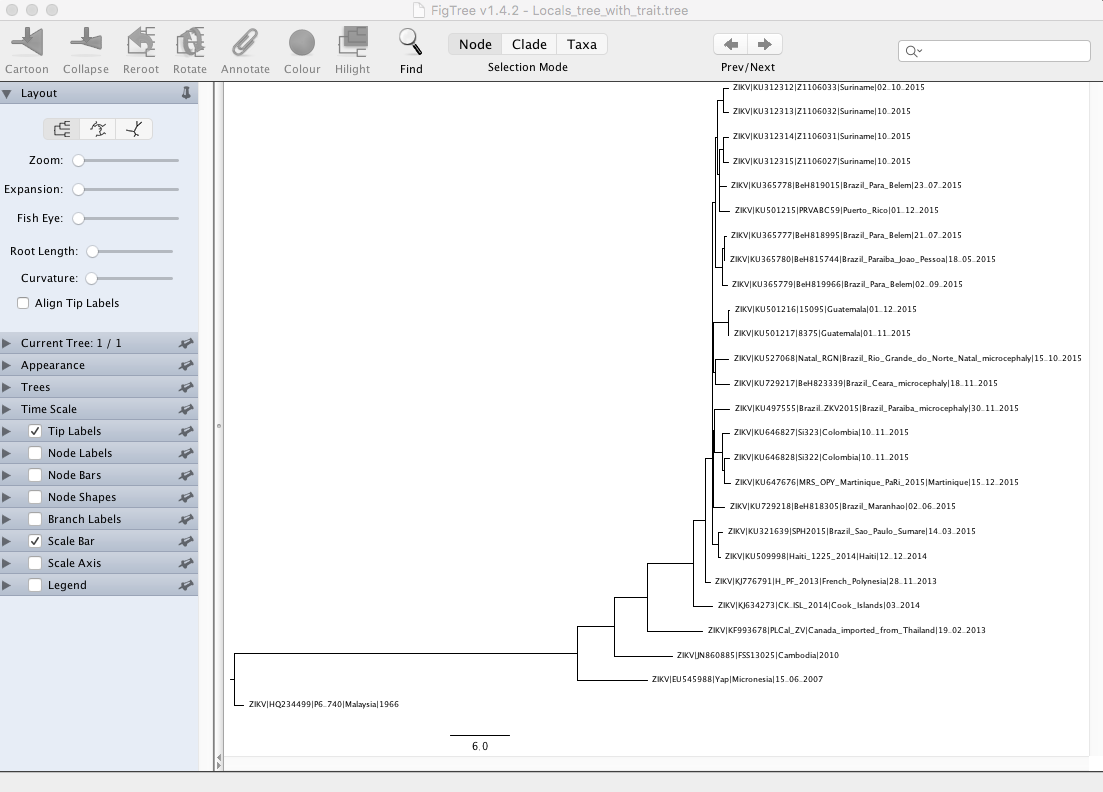
TRACER
In the Tracer program, we will load the BEAST log file to access some information from the analysis. Clicking on the + we will load the zika_tutorial.log file. Then, we will select, in the Traces tab, the variables mrcatime(A) and mrcatime(B).
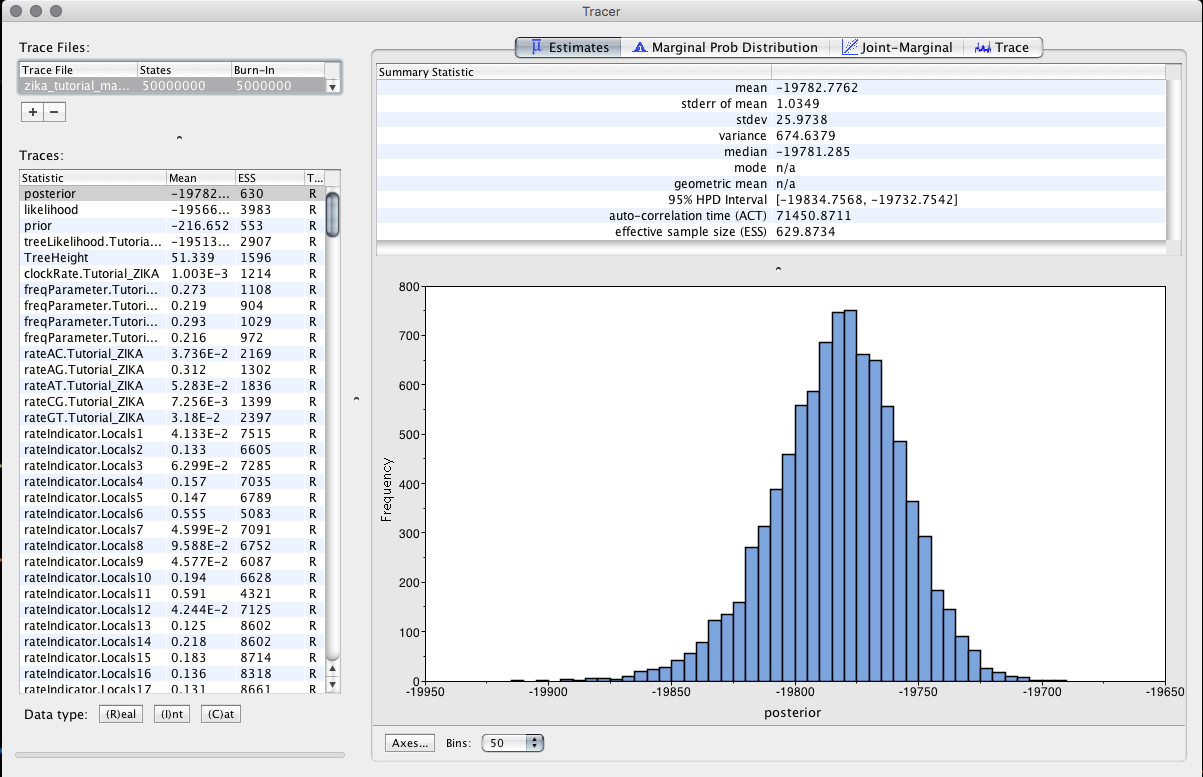
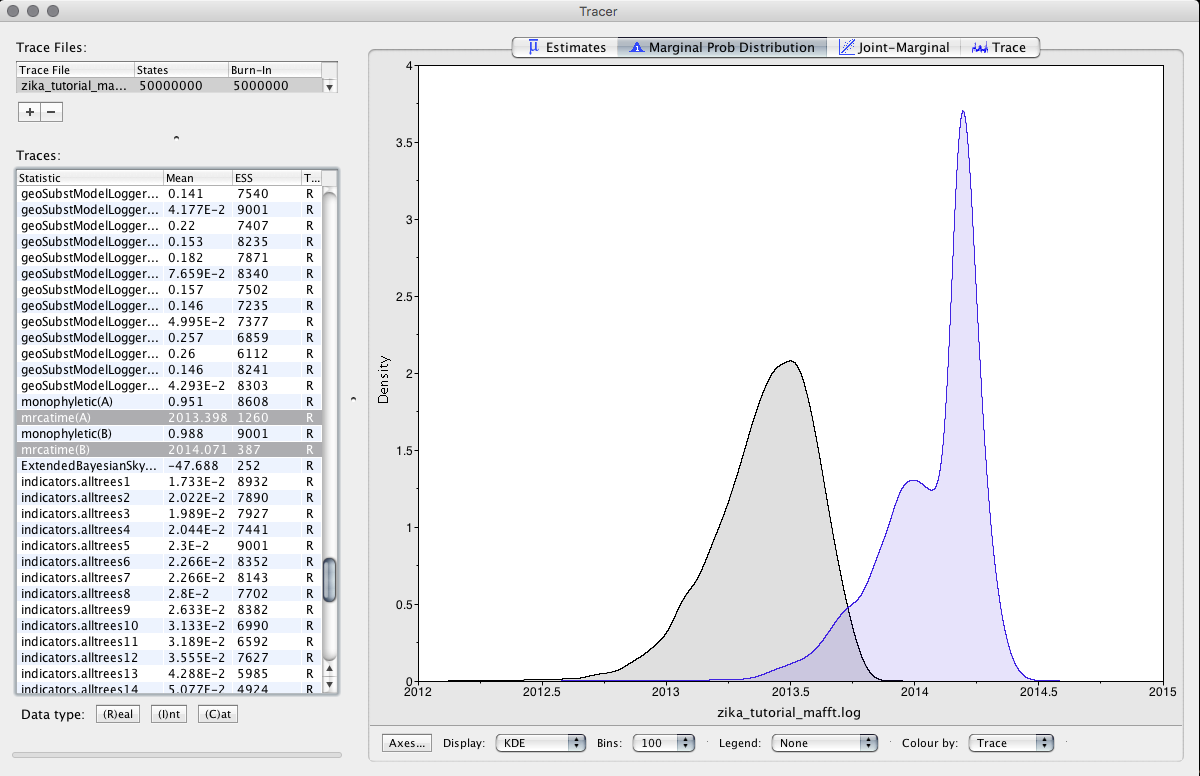
Observe the results.
Constructing the EBSP Plot
Open RStudio (or other R environment) and enter the following code:
plotEBSP(“/File_Folder/EBSP.log", useHPD=FALSE, log="y", xlim=c(0,5))
Remember to switch the File_Folder to the location where you saved the EBSP.log file.
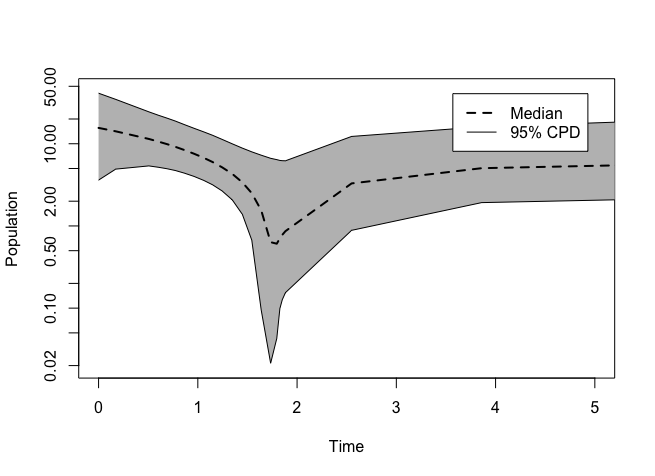
Compare the graph to the tree.
Using the package EBSPAnalyser
The EBSPAnalyser package produces a log file with columns time, mean, median, 95% upper and lower, which you can import in a spreadsheet or to your favorite plot software and use to draw a graph.
To run in Linux/MacOS, open a terminal window and use the follow command:
java -cp $(dir)/beast.jar beast.app.tools.EBSPAnalyser
where $(dir) points to the directory where beast.jar is located. A window pops up where you specify the EBSP.log file and some other settings.
Retrieved and adapted from Beast2/EBSPAnalyzer.
Files generated after the BEAST execution
The files generated from the above steps are available at the link below:
References
-
Bouckaert, R. et al. BEAST 2: A Software Platform for Bayesian Evolutionary Analysis. PLoS Computational Biology, v. 10, n. 4, p. e1003537, 10 abr. 2014.
-
Drummond, A. J. et al. Bayesian coalescent inference of past population dynamics from molecular sequences. Molecular Biology and Evolution, v. 22, p. 1185–1192, 2005.
-
Faria, N. R. et al. Zika virus in the Americas: Early epidemiological and genetic findings. Science (New York, N.Y.), v. 5036, n. March, p. aaf5036, 2016.
-
Ho, S. Y. W.; Shapiro, B. Skyline-plot methods for estimating demographic history from nucleotide sequences. Molecular Ecology Resources, v. 11, p. 423–434, 2011.